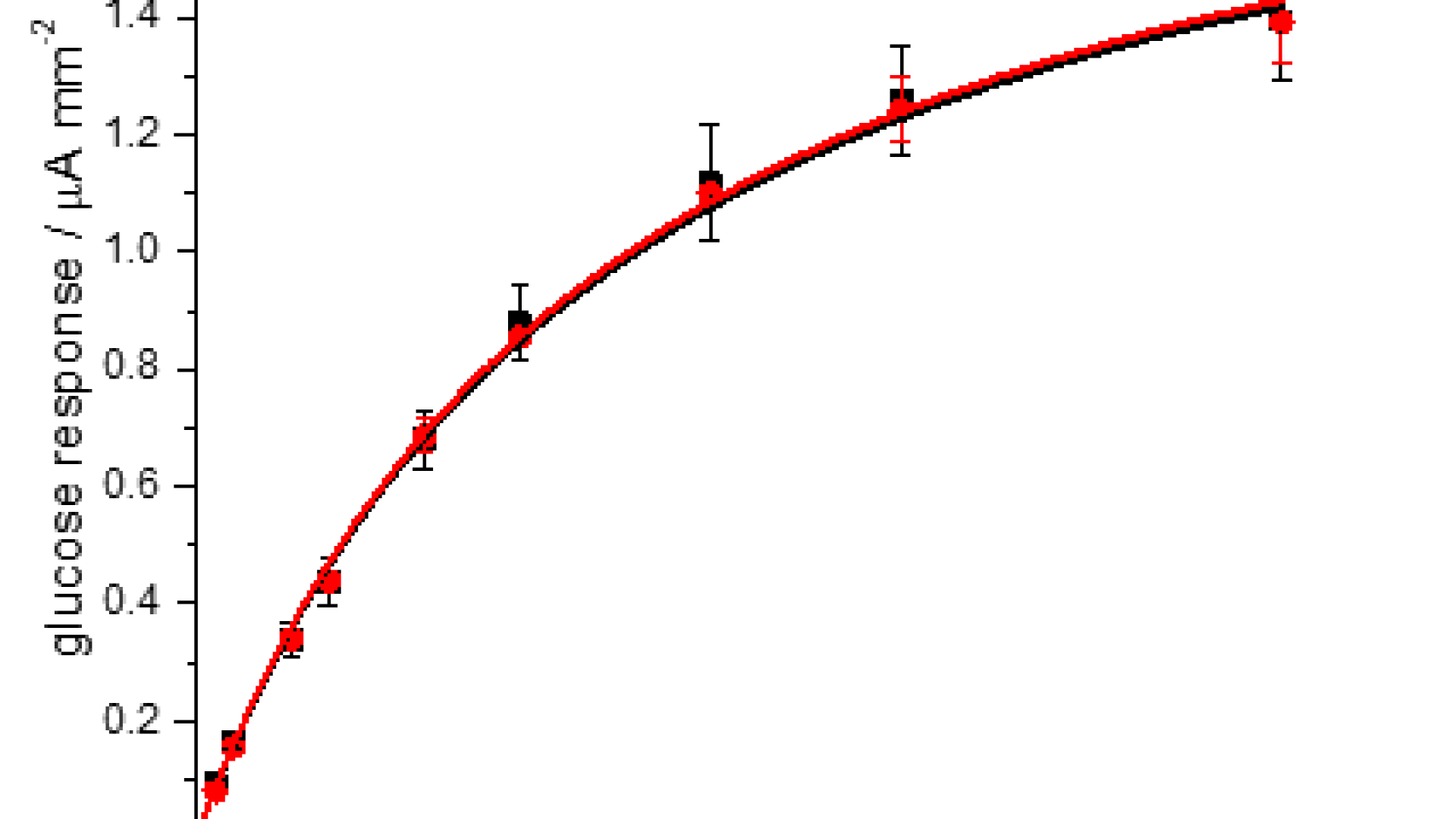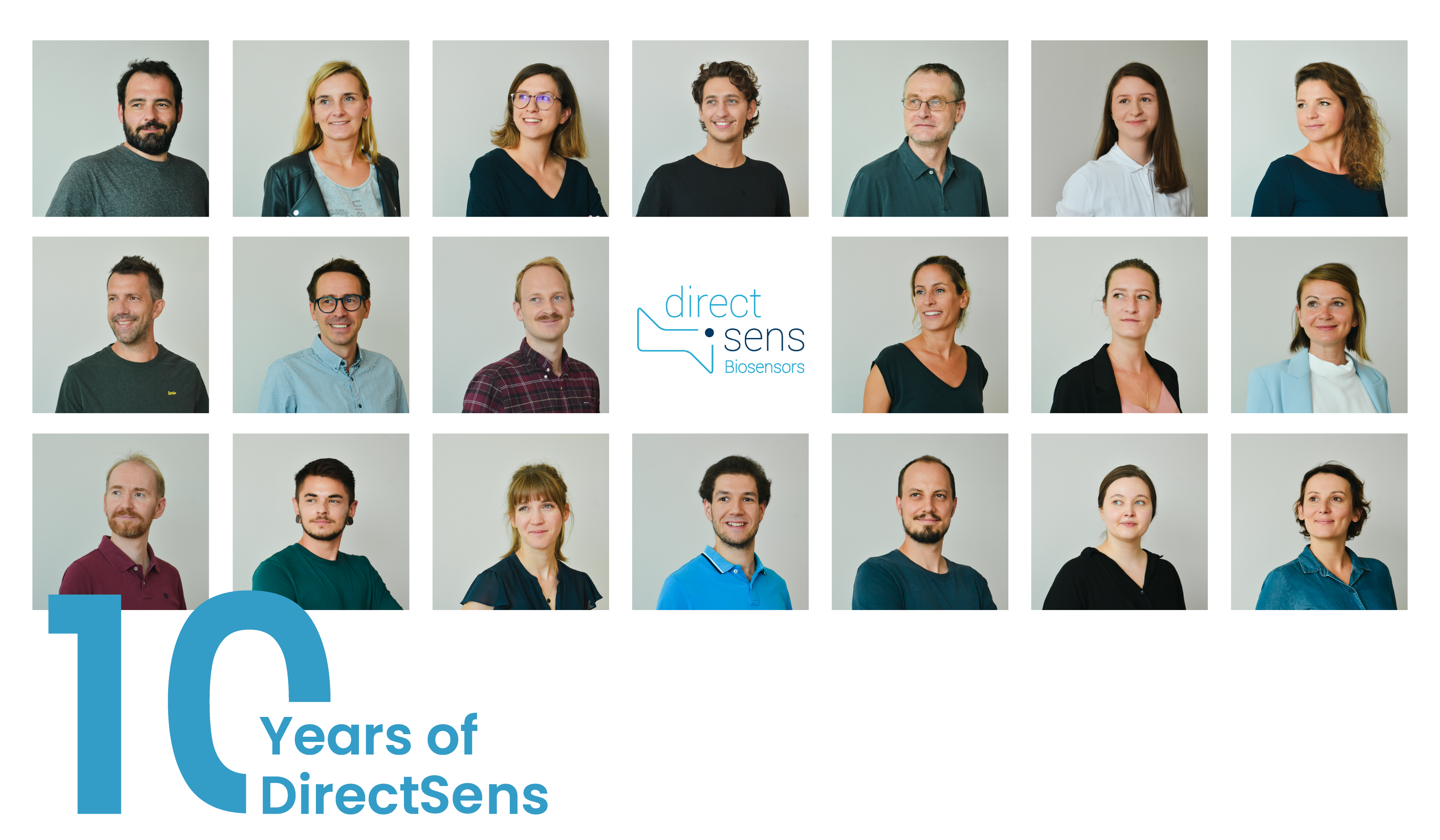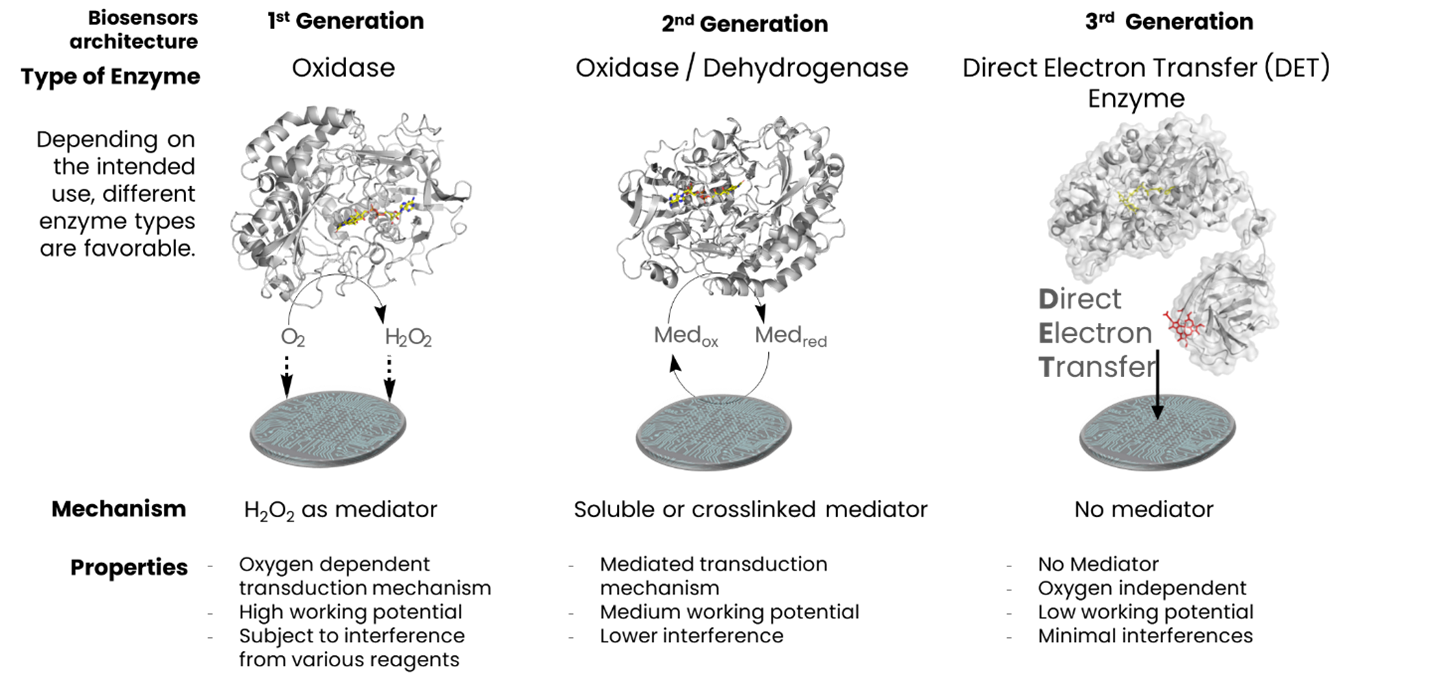Oxygen independent by Design
Enzymes are the heart of biosensors, driving their specificity and efficiency, as we have summarized in this blog post. However, 1st generation enzymes, most widely used in biosensors, are highly dependent on the availability of oxygen for their catalytic activity. This reliance can lead to a significant reduction in performance, especially when oxygen levels fluctuate, such as during periods of physical activity or in hypoxic environments. These oxygen-dependent enzymes exhibit variability in their readings, which limits their effectiveness in situations where oxygen concentration is unstable or low.
In contrast, sensors designed with 3rd generation (3G) enzymes bypass this limitation by directly transferring electrons to the electrode without requiring oxygen as a mediator. As a result, these 3G-enzymes enable sensors to maintain high performance and accuracy even in environments where oxygen is variable or completely absent. This makes them particularly suitable for applications in tissues or conditions where oxygen levels are compromised, such as during exercise or in certain medical contexts.
The figure illustrates a comparative analysis of the current output generated by a biosensor that operates without a diffusion-limiting membrane, under two distinct conditions: in the presence of oxygen (represented by the black curve) and in the absence of oxygen (represented by the red curve). The overlap between these two curves highlights the consistent performance of 3G enzyme across varying oxygen conditions.



